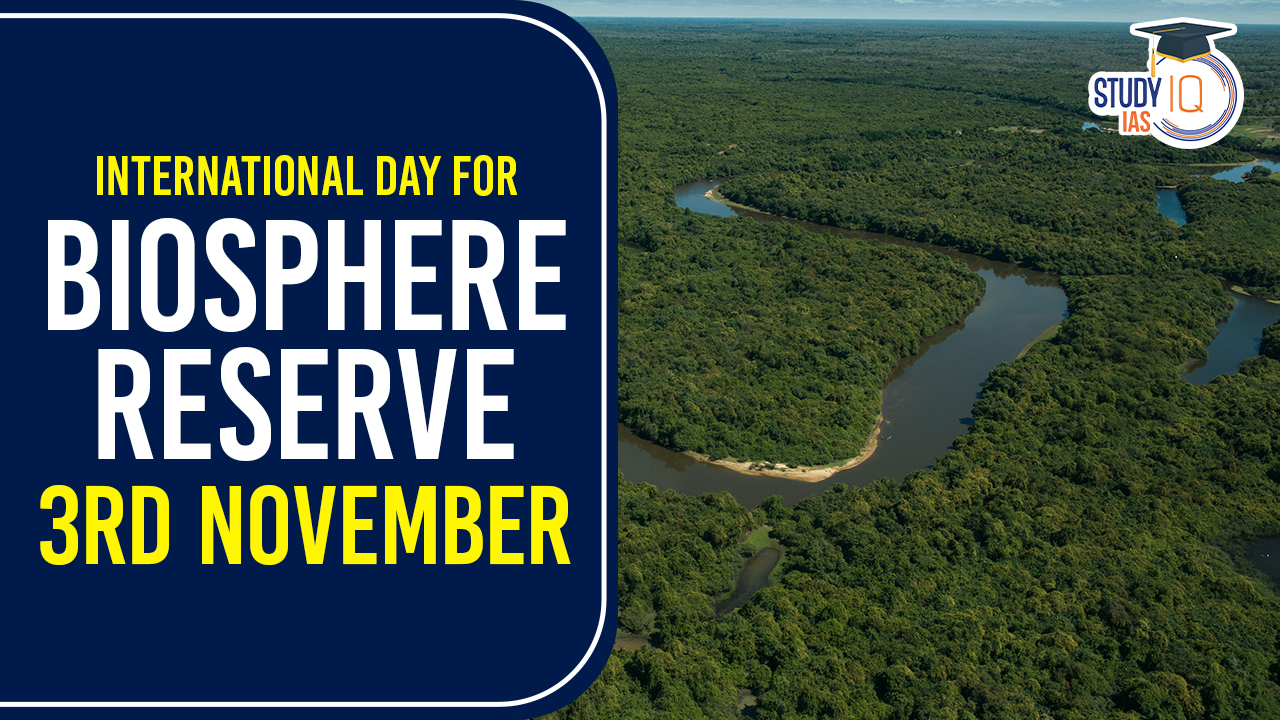Table of Contents
On November 3, the world celebrates the International Day for Biosphere Reserves, established by UNESCO in 2022. This day highlights the vital role of Biosphere Reserves in preserving the delicate harmony between nature and culture. These reserves are essential for conserving our planet’s natural and cultural diversity, and balancing human development with environmental protection. As we mark this day, we recognize the importance of expanding and supporting these areas to safeguard our heritage for future generations.
We’re now on WhatsApp. Click to Join
International Day for Biosphere Reserve 2023
International Day for Biosphere Reserves was celebrated on November 3, 2023. The day was established by UNESCO during its 41st General Conference in 2022. The theme for 2023 was #ItsAboutLife.
The day aims to emphasize and promote the activities within biosphere reserves, which aim to achieve a harmonious balance between sustainable development and the preservation of nature. Biosphere reserves have shown that it is possible to live in this world while also establishing a sustainable and harmonious relationship with nature.
The International Co-ordinating Council (ICC) of UNESCO introduced the designation “Biosphere Reserve” for natural areas in 1971. The concept of Biosphere Reserves was then formally launched in 1976 under UNESCO’s MAB Programme.
International Day for Biosphere Reserve 2023 Theme
The theme for the second UNESCO International Day for Biosphere Reserves on November 3, 2023 is #ItsAboutLife.
World Biosphere Reserve Day is celebrated annually on November 3 to raise awareness of the importance of biosphere reserves and to promote their conservation and sustainable use.
What Are Biosphere Reserves (BR)?
Biosphere Reserves (BR) represent an international designation conferred by UNESCO, encompassing significant portions of natural and cultural landscapes, including extensive terrestrial or coastal/marine ecosystems, or a blend of both. BRs strive to strike a balance between advancing economic and social development, preserving associated cultural values, and conserving the environment.
These designations are proposed by national governments and remain under the sovereignty of the countries where they are situated. They are established through the intergovernmental Man and the Biosphere (MAB) Programme and granted by the Director-General of UNESCO following decisions from the MAB International Coordinating Council (MAB ICC). The MAB Programme is an intergovernmental scientific initiative aimed at establishing a scientific foundation for enhancing the relationship between people and their surroundings, with their status receiving international recognition.
BRs consist of three main zones:
- Core Areas: These are strictly protected zones dedicated to conserving landscapes, ecosystems, species, and genetic diversity.
- Buffer Zones: Surrounding or adjacent to the core areas, these zones support activities aligned with sound ecological practices, reinforcing scientific research, monitoring, training, and education.
- Transition Areas: In the transition area, communities engage in socio-culturally and ecologically sustainable economic and human activities.
Biosphere Reserves in India and Worldwide
India
- India boasts 18 designated biosphere reserves covering a total area of approximately 60,000 square kilometers.
- The very first biosphere reserve in India is the Nilgiris, encompassing the blue mountains and spanning across Tamil Nadu, Karnataka, and Kerala.
- The Gulf of Kachchh in Gujarat stands as the largest biosphere reserve, while the Dibru-Saikhowa in Assam is the smallest.
- Notable Indian biosphere reserves also include the Gulf of Mannar in Tamil Nadu, the Sunderbans in West Bengal, and the Cold Desert in Himachal Pradesh.
Worldwide
- Globally, there are a total of 738 biosphere reserves located in 134 countries, which includes 22 transboundary sites, as recognized by UNESCO.
- These reserves are distributed across different regions, with the highest number of them in Europe and North America, followed by Asia and the Pacific, Latin America and the Caribbean, Africa, and Arab states.
- In South Asia, over 30 biosphere reserves have been established, with Sri Lanka’s Hurulu Biosphere Reserve being the first, covering 25,500 hectares of tropical dry evergreen forest.
- However, countries like Bangladesh, Bhutan, and Nepal have yet to establish biosphere reserves.
- On a global scale, Spain, Russia, and Mexico have the highest number of designated biosphere reserve sites.
- Notably, a significant achievement is the world’s first 5-country biosphere reserve, stretching across Austria, Slovenia, Croatia, Hungary, and Serbia. UNESCO declared this reserve in September 2021, covering 700 kilometers of the Mura, Drava, and Danube rivers. This European marvel, spanning almost 1 million hectares, is often referred to as the ‘Amazon of Europe.’
Significance of Biosphere Reserves in India
The significance of Biosphere Reserves in India:
- Biodiversity Conservation: Protects diverse and endangered species.
- Sustainable Development: Demonstrates eco-friendly practices for local communities.
- Research and Education: Provides living labs for environmental studies.
- Cultural Preservation: Safeguards indigenous heritage and traditions.
- Tourism and Awareness: Promotes eco-tourism and environmental education.
- Climate Change Mitigation: Helps in carbon storage and climate regulation.
- International Cooperation: Connects with the global network for knowledge sharing.
- Ecological Balance: Preserves habitats and maintains ecological harmony.
International Day for Biosphere Reserve 2023 UPSC
International Day for Biosphere Reserves, established by UNESCO, highlights the vital role of Biosphere Reserves (BRs) in achieving harmony between nature, culture, and sustainable development. BRs, designated internationally, balance economic growth, cultural preservation, and environmental conservation. India boasts 18 BRs, from the Nilgiris to the Gulf of Kachchh, conserving biodiversity and promoting sustainable practices. Globally, 738 BRs span 134 countries, emphasizing the importance of these zones for ecological research, cultural heritage preservation, and climate change mitigation. BRs offer a model for harmonious coexistence with nature and facilitate international cooperation, contributing to the conservation of our shared heritage and ecological balance.


 Operation Baam: Baloch Separatist Group ...
Operation Baam: Baloch Separatist Group ...
 National Register of Indian Citizens (NR...
National Register of Indian Citizens (NR...
 World Population Day 2025, Themes, Histo...
World Population Day 2025, Themes, Histo...





















